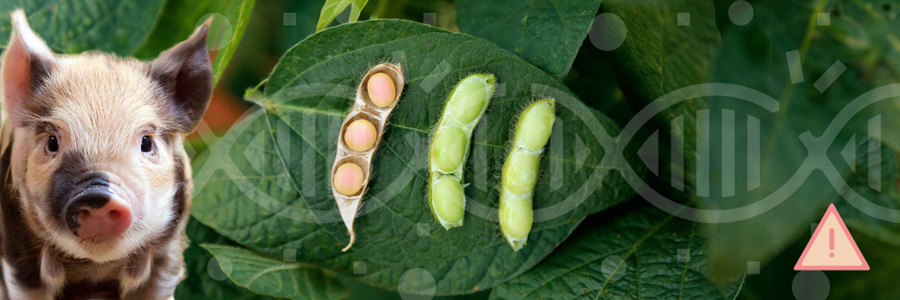
People have long been intrigued by chimeras. Greek mythology – from whence the word originated – has provided numerous examples of fantastical chimeric creatures: the griffin (part eagle, part lion), the minotaur (part bull, part human), the centaur (part horse, part human), and Pegasus (part horse, part bird). Chimeras were broadly viewed as monstrous, foreboding creatures.
Even before the development of genetic engineering, scientists searched for ways to create their own chimeric creatures, ultimately achieving the mule (part horse, part donkey) and the liger (part lion, part tiger).
Contemporary artists, such as sculptor Ellen Jewett, have taken our imaginations one step further, giving form to surrealistic visions of chimeric creatures that not only merge living things from different species but from different kingdoms (i.e., animals and plants) into a single organism – a deer with antlers that sprout foliage, a bird from whose tail feathers emerge branches of berries, a snake that sports its own camouflaging understory.
These manifestations of an artist’s imagination are visually stunning and on the surface have lost the foreboding presence of their Greek predecessors. However, their visual appeal belies the fact that they are also strangely unnatural, their beauty serving as a foil, a distraction from an underlying concept that many find somewhat creepy and troubling.
Once again, scientists are following suit. Only now with genetic engineering, their capabilities have expanded significantly, way beyond the capacity of nature. Numerous real-world efforts to develop animal-plant chimeras are being undertaken via molecular farming to create products that could one day end up on your dinner plate: egg protein produced in potato, myoglobin in corn, beef protein in pea, and dairy protein in lettuce.
Unlike the creations of artists’ imaginations, the real animal-plant chimeras aren’t necessarily easily identifiable and in some cases are indistinguishable from their non-genetically modified crop counterparts. So much so that earlier this year, the FDA issued a general warning to all molecular farming developers who are incorporating animal DNA into plants: these crops incorporate known allergens, and developers need to be aware of the “relevant legal requirements” for these products and manage them and their risks accordingly, which includes processing and labeling.
We first brought molecular farming to your attention in September 2022, explaining the term and highlighting a handful of developers working in this space. Since that time, the number of developers has almost doubled, and some initial products, though not yet commercially available, have begun to emerge.
In late June, Moolec Science (Moolec), one of the earliest molecular farming developers, announced that under the soybean platform of its Meat Replacement Program, it has developed a soybean that incorporates pig DNA. Branded as Piggy Sooy, the soybean reportedly features up to 26% animal protein. Specific details regarding the development of the product are unknown, although Moolec has stated that it filed a “new patent utilizing a novel approach.” According to an SEC filing, the company has filed 23 patents overall.
Moolec has said that it plans to extract the pig protein for sale to food manufacturers in order to enable plant-based meat analogs to taste more like meat – presumably pork – although it’s unclear whether anyone has actually tasted the soybean. It is also unclear how this product will be regulated. The company anticipates that it will be 4 to 5 years before the first product will be commercially available.
Again, in the interest of transparency, below are some of the developers (in addition to those highlighted in 2022) that are working in the space.
Motif Foodworks/IngredientWerks
Earlier this year in March, Motif Foodworks (Motif), a subsidiary of Ginkgo Bioworks that was created to develop next-generation food products, reported that it had entered into a partnership with IngredientWerks to explore the potential for using molecular farming to create its synbio myoglobin, Hemami. The target crop is corn. IngredientWerks, also a biotechnology company, is a subsidiary of Agrivida, which is the developer of genetically modified GraINzyme phytase corn.
PoLoPo
PoLoPo, a molecular farming developer, is genetically engineering potato plants to incorporate egg protein. The company chose potato in part because of its ubiquity worldwide. Founded in 2022, PoLoPo raised $1.75 million in pre-seed funding earlier this year. PoLoPo hopes to have a prototype sometime in 2024.
Bright Biotech
Founded in 2019, Bright Biotech (Bright), is another molecular farming startup. The company is working to develop a new genetic engineering method to create growth factors for use in the cell-cultured meat industry. Late last year, Bright raised $3.2 million in a seed funding round. It is unknown what crop(s) might be involved.
BioBetter
BioBetter is also using molecular farming to create growth factors for the cell-cultured meat industry – in tobacco. Last month, the company announced that it had opened its first pilot facility for tobacco cultivation. BioBetter claims that it will have the capacity to process approximately 200 lbs of tobacco-derived growth factors per day.
Imagene Foods
Imagene Foods (Imagene) is using molecular farming to produce dairy proteins in plants. Founded in 2021, the company is currently operating in stealth mode, so very little is known about its funding, development work, or plans.
Non-GMO Project’s Standard defines all crops and products developed using biotechnology, including new gene-editing techniques, as GMOs. We share this information to further one of the Project’s primary goals of creating greater transparency in the supply chain, ensuring you have the information you need to make the best choices for you, your brand, and your family.
Please note that the information herein is for general informational purposes only and is based on the linked sources above.
The Non-GMO Project is a 510c3 nonprofit dedicated to protecting and promoting non-GMO alternatives. New GMO Alerts is supported by funding from readers like you. Donate today
